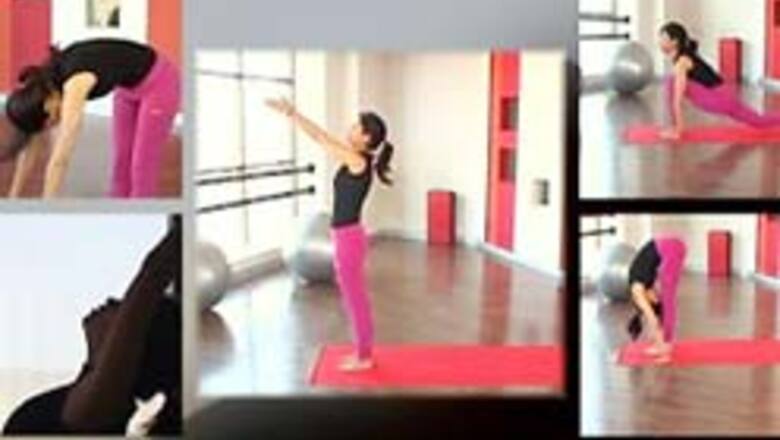
views
Fitness expert Sahlini Vadhera answers queries and explains some simple asanas to help improve the condition of hypothyroid and long sightedness.
Rajesh: Hi, I have a hypothyroidism which is an under active thyroid gland. It means that the thyroid gland can't make enough thyroid hormone to keep the body running normally. People are hypothyroid if they have too little thyroid hormone in the blood. Common causes are autoimmune disease, surgical removal of the thyroid, and radiation treatment.
I have started medicines for this but as per the doctor, the medication will have to be taken for whole of my life, I'm a bit scared of this dependency on the medicine. Besides this I have long sightedness problem, and my number is increasing.
I would like to know of some Yoga asanas to improve my condition.
Shalini Vadhera: Hi, hypothyroid and long sightedness are amongst very commonly heard issues these days. You will be surprised to know that there are some very simple asanas for the same.
For hypothyroid: Sahaj Pranayam can do wonders. Sit comfortably in padmasana or vajrasana (bending knees and sitting with your hips on the heels.)
Inhale deeply, hold your breath and then gradually take your chin to chest. Hold on to the posture as long as you can, when you run out of breath, first look up and then gradually exhale.
One can easily do up to three cycles of sahaj pranayam twice a day, but ensure your back is straight at all times.
For long sightedness:
Sideways viewing — sit in a comfortable position and raise your arms at shoulder level with thumb pointing upward. Now without moving the head sideways focus the eyes on the following, one after another:
- Left thumb
- Between eye brows
- Right thumb
- Between eye brows
- Back to left thumb
Repeat this 10-20 times keeping your head and spine straight.
This can be concluded with 'palming' — which is simply rubbing your palms and then placing them on your shut eyes.
One can observe that the vision is quite sharp for the first few seconds. This will gradually help in re-training the muscles.
Palming can be performed at any time, especially when the eyes feel a little tired.




















Comments
0 comment